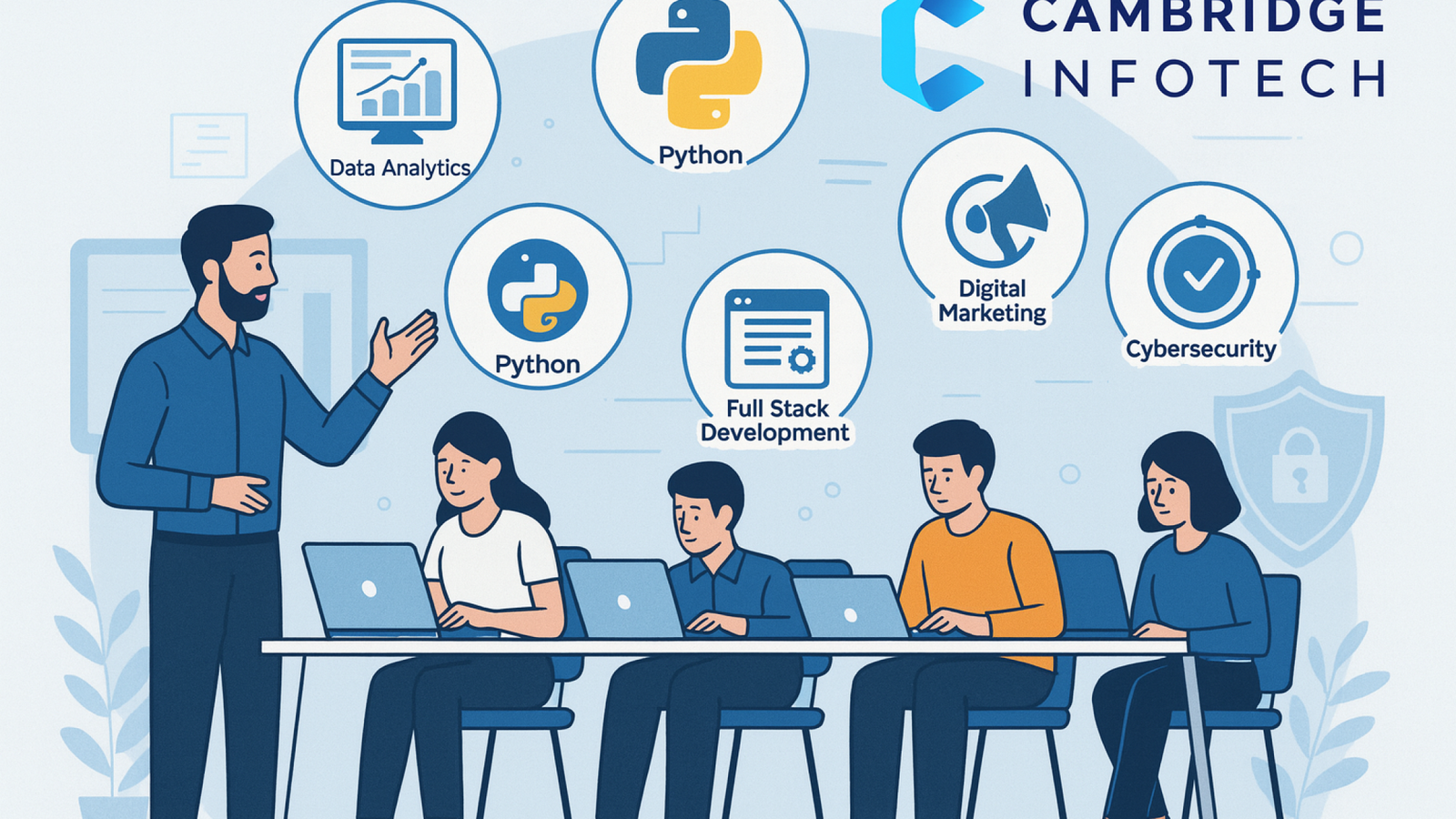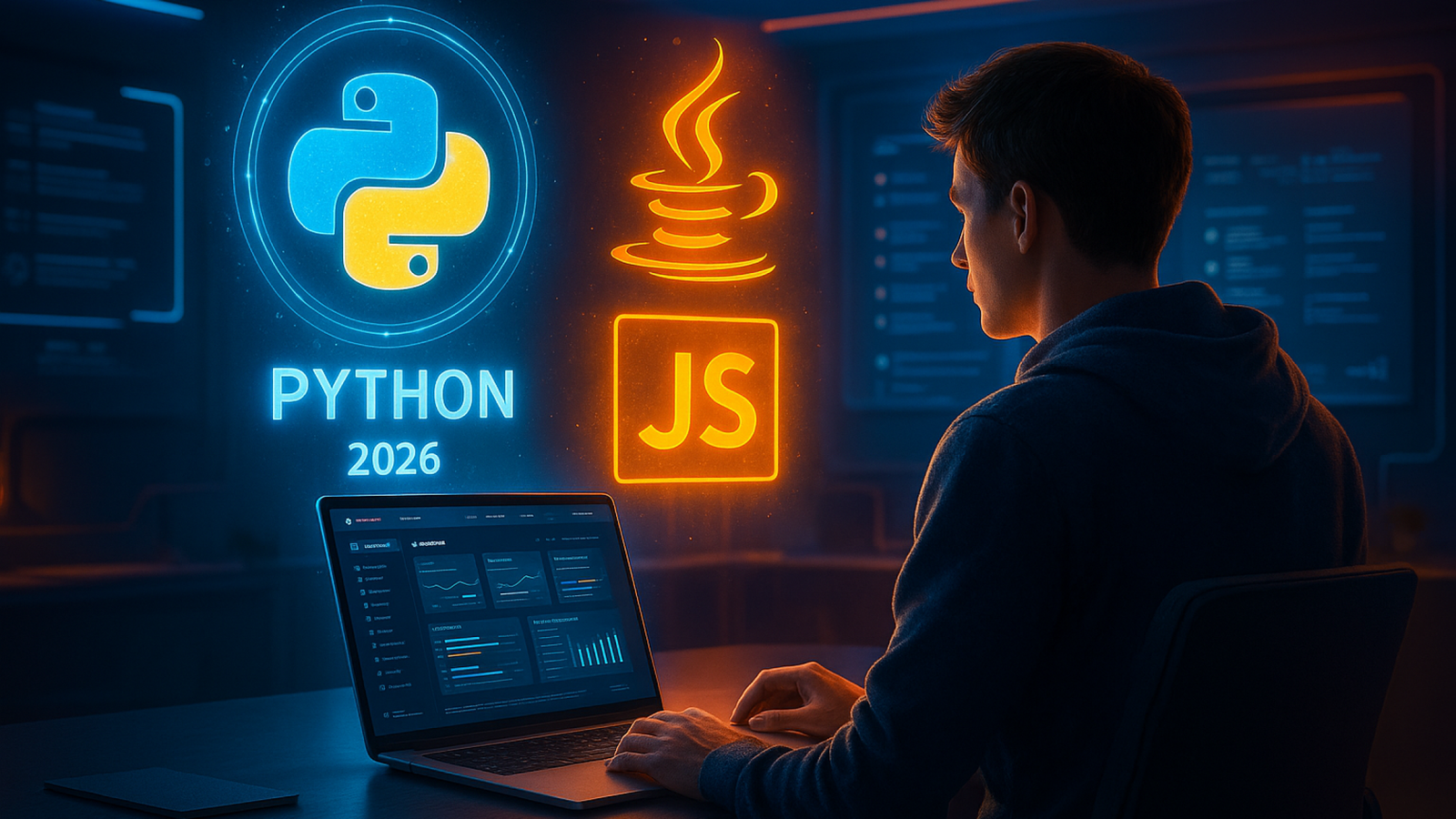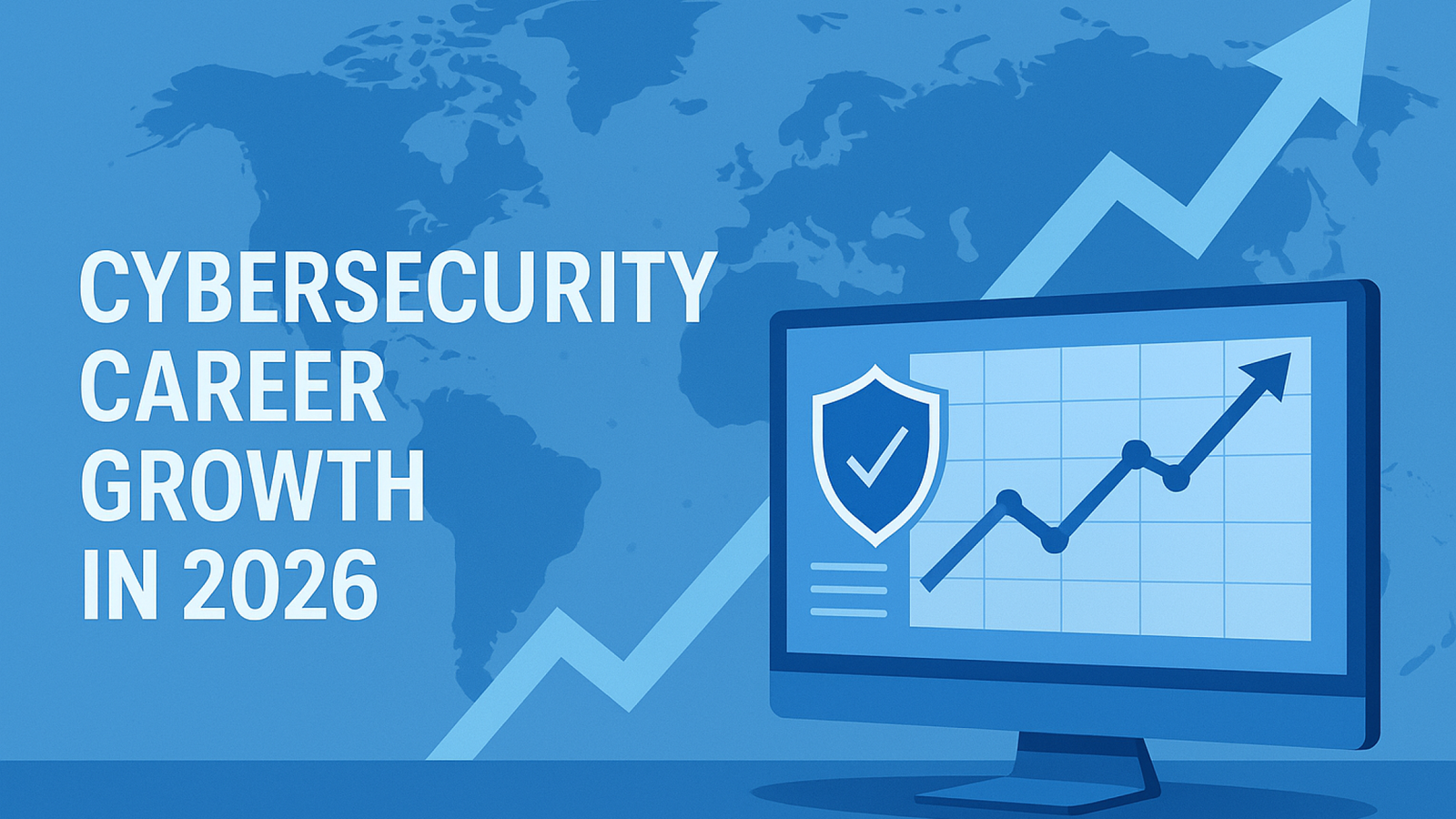AI in Cybersecurity 2026: Powerful Tools Redefining Cyber Defense

Introduction
In 2026, the conversation around AI in Cybersecurity 2026 has reached a turning point. As cyber threats grow more complex, global organizations are turning to artificial intelligence to anticipate, detect, and neutralize risks before they strike. The rapid evolution of AI in Cybersecurity 2026 is redefining how businesses, governments, and even educational institutions protect their digital ecosystems.
Artificial Intelligence is no longer a futuristic concept — it’s the driving force behind every modern security strategy. From machine learning algorithms that identify anomalies to deep learning systems that understand attacker behavior, AI in Cybersecurity 2026 represents a blend of speed, precision, and adaptability unmatched by traditional defense methods.
 Why AI in Cybersecurity 2026 Matters
Why AI in Cybersecurity 2026 Matters
Cybercrime is predicted to cost the world more than $15 trillion annually by 2030, and AI in Cybersecurity 2026 has emerged as the most effective shield against this escalating threat. In a world where one data breach can destroy a brand’s reputation overnight, companies are investing in AI-powered defense tools that can:
Detect intrusions in milliseconds
Automate real-time threat responses
Predict attack patterns before they occur
Safeguard data across cloud and hybrid infrastructures
These capabilities make AI in Cybersecurity 2026 a game-changer for businesses, IT professionals, and even students preparing for future tech careers.
How AI is Redefining Security
What makes AI in Cybersecurity 2026 revolutionary is its ability to learn and evolve continuously. Instead of relying on fixed rule sets, AI systems adapt through machine learning and behavioral analytics. For instance, when a phishing attack bypasses a filter, AI learns from that failure and strengthens its detection model for the next attempt.
This cycle of continuous learning gives AI in Cybersecurity 2026 an edge — transforming cyber defense from reactive to proactive. With advanced algorithms capable of detecting micro-level anomalies, security systems can now identify insider threats, ransomware attempts, and data exfiltration patterns in real time.
The Growth of AI in Cybersecurity 2026 Across Industries
From financial institutions to healthcare systems, every industry is now integrating AI in Cybersecurity 2026 to protect sensitive information. Cloud providers like AWS and Microsoft Azure deploy AI-driven security models to defend global data centers, while startups leverage AI tools for endpoint detection and response (EDR).
Educational organizations such as Cambridge Infotech are adopting AI in Cybersecurity 2026 not just to protect data, but also to train the next generation of cybersecurity experts through AI-powered learning tools and virtual labs.
AI Tools Powering the Future
Some of the most popular tools driving AI in Cybersecurity 2026 include:
Darktrace AI — Autonomous threat detection
CrowdStrike Falcon — AI-driven endpoint defense
IBM QRadar AI — Smart incident response
Microsoft Defender AI — Cloud-integrated security
Palo Alto Cortex XDR — AI analytics for enterprise protection
These innovations show how AI in Cybersecurity 2026 has moved beyond theory into everyday practice — protecting millions of devices and networks across the world.
 How AI is Transforming Cybersecurity in 2026
How AI is Transforming Cybersecurity in 2026
The evolution of AI in Cybersecurity 2026 marks a defining shift in how organizations defend their data and digital assets. Unlike traditional systems that react after an attack, AI in Cybersecurity 2026 empowers defense mechanisms to act before an intrusion occurs. In 2026, artificial intelligence isn’t just supporting cybersecurity — it’s leading it.
From Reactive to Predictive Defense
The most powerful impact of AI in Cybersecurity 2026 lies in its predictive nature. AI systems are now capable of identifying potential breaches before they happen. Using advanced machine learning (ML) models, these systems analyze patterns of past attacks, detect subtle irregularities in real time, and predict future threats with remarkable accuracy.
In 2026, predictive threat intelligence has become a global standard. Financial institutions, healthcare networks, and tech companies all rely on AI in Cybersecurity 2026 to monitor massive data flows continuously. By learning from each anomaly, AI tools develop defense strategies that evolve as fast as cybercriminals innovate.
Imagine a world where your company’s firewall doesn’t just block known attacks — it anticipates new ones. That’s the power of AI in Cybersecurity 2026.
Machine Learning and Threat Detection
Machine learning (ML) is the backbone of AI in Cybersecurity 2026. Instead of manual monitoring, AI algorithms automatically detect and classify threats, reducing human error and response times. When a suspicious login or file modification occurs, the system compares it against millions of prior attack signatures, instantly recognizing malicious intent.
Key ML models used in AI in Cybersecurity 2026 include:
Supervised learning — for identifying known malware patterns.
Unsupervised learning — for detecting unseen or zero-day threats.
Reinforcement learning — for self-improving defense mechanisms.
This automated intelligence enables AI in Cybersecurity 2026 to neutralize complex attacks like ransomware, phishing, and data breaches within seconds — without human intervention.
AI-Powered Security Operations Centers (SOCs)
Security Operations Centers (SOCs) have evolved dramatically with AI in Cybersecurity 2026. Traditional SOCs relied heavily on human analysts to sift through alerts — a time-consuming and error-prone process. In 2026, AI-driven SOCs can autonomously analyze thousands of logs per second, prioritize genuine threats, and recommend optimal responses in real time.
Leading companies are building autonomous SOCs that integrate AI in Cybersecurity 2026 tools like Darktrace Antigena, IBM Watson Security, and Cortex XSOAR. These AI-powered systems don’t just monitor — they learn, predict, and respond with precision.
Cambridge Infotech’s training modules for cybersecurity students also integrate SOCs powered by AI, preparing learners to manage the next generation of digital defense systems. This is how AI in Cybersecurity 2026 is creating both protection and opportunity.
AI and Behavioral Analytics
Another major advancement within AI in Cybersecurity 2026 is behavioral analytics. Instead of focusing solely on malware, AI now studies how users and devices behave. If an employee suddenly accesses sensitive files at odd hours or connects from a new location, AI tools detect this as an anomaly — a potential insider threat.
This level of behavioral insight gives AI in Cybersecurity 2026 an unmatched advantage. Organizations are not just monitoring their networks; they are understanding behavior to preempt insider risks, identity theft, and unauthorized data access.
Cloud Security Powered by AI
The global shift to cloud computing has expanded the attack surface — and AI in Cybersecurity 2026 is the key to securing it. AI-driven cloud security tools like Microsoft Defender for Cloud, Google Chronicle, and AWS GuardDuty AI are redefining how organizations manage cloud vulnerabilities.
These platforms use AI in Cybersecurity 2026 to:
Detect configuration errors and misused credentials
Monitor identity access management (IAM)
Automate compliance reporting
Respond to suspicious cloud activity in real time
By integrating AI with Zero Trust frameworks, cloud providers are setting new standards for digital resilience in 2026.
AI and Incident Response
When cyberattacks occur, speed is everything. In 2026, AI in Cybersecurity 2026 enables instant incident response through automation. Instead of waiting for human action, AI tools isolate affected systems, analyze attack vectors, and begin remediation automatically.
For example, if ransomware is detected, AI in Cybersecurity 2026 can immediately quarantine infected devices, block related IPs, and deploy recovery measures — sometimes before employees even notice.
This combination of speed, accuracy, and adaptability has made AI-based incident response the new industry standard.
Human + AI Collaboration
Even though AI in Cybersecurity 2026 is highly autonomous, it doesn’t replace human expertise — it enhances it. Security analysts use AI insights to make faster and more informed decisions. This human-AI synergy ensures that creative thinking complements computational precision, making defenses more resilient than ever.
As a result, cybersecurity professionals are shifting from manual monitoring to strategic supervision, where they guide, optimize, and train AI systems to adapt to evolving cyber threats.
 Top AI Cybersecurity Tools 2026 – Revolutionizing Digital Defense
Top AI Cybersecurity Tools 2026 – Revolutionizing Digital Defense
As cyberattacks grow more sophisticated, the demand for smarter defense systems powered by AI in Cybersecurity 2026 is at an all-time high. Organizations worldwide are adopting advanced AI-based tools that not only detect and respond to threats faster but also learn and evolve continuously.
In 2026, the competitive edge lies in how effectively an organization integrates AI in Cybersecurity 2026 into its infrastructure. Below are the top 10 AI cybersecurity tools of 2026 that are transforming global digital defense systems.
If you’re passionate about mastering AI in Cybersecurity 2026 and want to gain real-world skills, explore our advanced Cybersecurity Programs at Cambridge Infotech — designed for students and professionals aiming to become certified AI security specialists.
1. Darktrace — The Autonomous Cyber AI
Darktrace remains one of the most revolutionary tools driving AI in Cybersecurity 2026. It uses self-learning AI to detect, respond to, and prevent cyber threats across digital ecosystems. Instead of relying on signatures or rule-based alerts, Darktrace understands the normal behavior of every user and device — allowing it to spot even subtle deviations that indicate a threat.
Key Features of Darktrace in AI Cybersecurity 2026:
Autonomous detection and response
Real-time AI-powered monitoring
Cloud, email, and IoT threat prevention
Antigena AI Response for automated remediation
Darktrace represents how AI in Cybersecurity 2026 is shifting from reactive defense to autonomous security ecosystems.
2. CrowdStrike Falcon — AI Endpoint Protection
CrowdStrike Falcon continues to dominate AI in Cybersecurity 2026 with its cloud-native endpoint protection platform. It uses machine learning algorithms and behavioral analytics to stop breaches before they occur.
Why CrowdStrike leads AI in Cybersecurity 2026:
AI-driven behavioral analysis for endpoint threats
Real-time detection of ransomware and malware
Cloud-delivered scalability for enterprises
Integration with threat intelligence networks
CrowdStrike’s adaptability makes it a cornerstone in AI in Cybersecurity 2026, helping enterprises stay ahead of new digital threats.
3. IBM QRadar AI — Intelligent Threat Detection
IBM’s QRadar AI is redefining how enterprises automate their SOC operations. In 2026, QRadar leverages AI in Cybersecurity 2026 to identify patterns and relationships between multiple low-level alerts, reducing false positives by over 90%.
Highlights of IBM QRadar in Cybersecurity 2026:
AI-assisted threat correlation and analysis
Deep integration with SIEM systems
Real-time threat prioritization
Automated incident response
IBM’s focus on scalable AI models reinforces how AI in Cybersecurity 2026 is transforming enterprise-level defense mechanisms.
4. Palo Alto Cortex XDR — Cross-Platform AI Defense
Palo Alto Networks has solidified its place in AI in Cybersecurity 2026 through Cortex XDR, a platform that integrates AI, automation, and analytics to detect threats across networks, endpoints, and clouds.
Key Strengths:
Unified AI analytics across multiple layers
Threat visualization and behavioral insights
Automated response and remediation
Cloud-native security management
Cortex XDR demonstrates the power of AI in Cybersecurity 2026 when it comes to delivering multi-layered protection in hybrid environments.
5. Microsoft Defender AI — Intelligent Cloud Security
Microsoft’s Defender suite is one of the most powerful examples of AI in Cybersecurity 2026. It offers AI-driven threat protection across Microsoft 365, Azure, and Windows ecosystems.
Capabilities of Microsoft Defender in Cybersecurity 2026:
AI-based phishing and malware detection
Cloud-integrated identity protection
Endpoint and network-level defense
Automated incident recovery
Through continuous updates, Microsoft ensures AI in Cybersecurity 2026 keeps evolving to protect both enterprises and individuals in the connected world.
6. SentinelOne Singularity — Autonomous Threat Hunting
SentinelOne has redefined AI in Cybersecurity 2026 by blending machine learning and automation for autonomous endpoint defense. Its AI model not only identifies attacks but also reverses malicious changes instantly.
Why SentinelOne matters in AI in Cybersecurity 2026:
Full autonomous response system
Storyline AI for contextual analysis
Cloud and on-premise scalability
Superior behavioral detection
SentinelOne proves how AI in Cybersecurity 2026 can empower organizations with self-defending systems that adapt faster than human analysts.
7. Check Point Harmony AI — Unified AI Protection
Check Point’s Harmony AI delivers a unified approach to AI in Cybersecurity 2026, protecting networks, cloud assets, and mobile endpoints from evolving threats.
Core Advantages:
AI-driven phishing detection
Endpoint protection with behavioral analytics
Secure access for remote workers
Cloud-based intelligence feed integration
Check Point’s solution showcases the breadth of AI in Cybersecurity 2026 — spanning endpoint, cloud, and network defense in one integrated suite.
8. Google Chronicle — AI-Powered Security Analytics
Google’s Chronicle platform uses big data and AI to help enterprises make sense of billions of security logs. As part of AI in Cybersecurity 2026, Chronicle brings speed and visibility to security analytics, turning complex data into actionable intelligence.
Why Chronicle is essential in AI in Cybersecurity 2026:
Ultra-fast log analysis at global scale
AI-driven event correlation
Cloud-native infrastructure
Integration with VirusTotal and Google Cloud Security
Chronicle reflects Google’s vision of AI in Cybersecurity 2026 — scalable, intelligent, and insight-driven.
9. Sophos Intercept X — Deep Learning Protection
Sophos Intercept X stands out for its deep learning approach to threat detection. Its advanced neural network is a perfect example of the innovation behind AI in Cybersecurity 2026.
Top Features:
Deep learning malware analysis
Exploit prevention technology
AI-based ransomware protection
Cross-platform visibility
Sophos ensures AI in Cybersecurity 2026 can protect businesses of all sizes — not just large enterprises.
10. Cybereason Defense AI — Predictive Protection
Cybereason’s Defense AI is a next-generation platform built for AI in Cybersecurity 2026. Its MalOp (malicious operations) engine uses AI to automatically correlate events and identify root causes within seconds.
Core Highlights:
Predictive AI analytics
Automated endpoint detection and response
Real-time global threat intelligence
Comprehensive attack visualization
Cybereason’s technology encapsulates the future of AI in Cybersecurity 2026 — fast, intelligent, and deeply integrated into enterprise defense strategies.
Why These Tools Define AI in Cybersecurity 2026
Each of these tools represents the convergence of automation, analytics, and human expertise. Together, they showcase how AI in Cybersecurity 2026 is no longer optional — it’s essential for survival in the digital era.
Organizations leveraging these tools gain:
80% faster threat detection
60% lower incident response time
90% improved data visibility
From predictive analytics to autonomous protection, these technologies are shaping the core of digital defense in AI in Cybersecurity 2026 and beyond.
Cybersecurity Trends 2026 — The Future of AI Defense
As we step deeper into 2026, the cybersecurity landscape is being reshaped by AI in Cybersecurity 2026. What once relied on manual detection and static defense mechanisms has evolved into an autonomous, intelligent, and predictive ecosystem. The fusion of artificial intelligence with cybersecurity has given rise to systems that learn from attacks, predict future threats, and react in real time — often faster than human teams could ever manage.
The key to digital resilience in AI in Cybersecurity 2026 is adaptation — the ability of AI systems to evolve faster than cybercriminals innovate.
1. Predictive Threat Intelligence Becomes the New Standard
In AI in Cybersecurity 2026, predictive threat intelligence is no longer a luxury — it’s a necessity. Using machine learning models trained on billions of threat signals, AI systems can forecast potential attacks before they even occur.
These AI systems analyze behavior, network patterns, and global threat feeds to identify vulnerabilities early. As a result, organizations in 2026 are shifting from reactive defense to proactive intelligence.
Key trend highlights in AI in Cybersecurity 2026:
Predictive analytics helps forecast ransomware outbreaks.
AI-driven data correlation identifies weak points automatically.
Security operations centers (SOCs) now rely heavily on AI threat scoring models.
In short, the rise of predictive AI ensures that AI in Cybersecurity 2026 acts as both a shield and a radar — protecting and forewarning simultaneously.
2. AI-Powered SOCs (Security Operations Centers)
Security Operations Centers (SOCs) powered by AI in Cybersecurity 2026 are transforming from reactive hubs into fully autonomous control systems. Traditional SOCs often struggled with alert fatigue and manual analysis. Now, AI algorithms automatically triage incidents, assign severity scores, and even initiate containment responses.
With AI in Cybersecurity 2026, SOCs can:
Analyze millions of events per second.
Detect anomalies invisible to traditional tools.
Automate 80% of initial response activities.
This automation enables cybersecurity experts to focus on high-level strategy and investigation rather than repetitive tasks — marking a new era in intelligent digital defense.
3. AI-Driven Zero Trust Architecture
The Zero Trust Model, one of the biggest cybersecurity frameworks, has evolved significantly with AI in Cybersecurity 2026. Zero Trust operates on the principle of “never trust, always verify.”
Now, with artificial intelligence, systems dynamically verify user identities, device health, and data behavior in real time. AI continuously scores trust levels and can revoke access instantly if something suspicious occurs.
Key benefits of AI in Cybersecurity 2026 within Zero Trust:
Continuous authentication using AI-based biometrics.
Behavioral AI models identify insider threats.
AI dynamically enforces micro-segmentation policies.
This makes AI in Cybersecurity 2026 the backbone of adaptive, context-aware Zero Trust ecosystems.
4. AI in Cloud Security — Protecting the Infinite Perimeter
As the cloud expands across global industries, AI in Cybersecurity 2026 plays a critical role in securing distributed environments. AI-driven cloud security tools automatically monitor APIs, detect misconfigurations, and prevent data exfiltration across multi-cloud ecosystems.
In 2026, AI models trained on massive cloud datasets can instantly flag unusual activity patterns that hint at intrusions.
Major advantages of AI-powered cloud defense:
Real-time anomaly detection across hybrid clouds.
Automated response to misconfigurations and compliance issues.
Data privacy enforcement using AI encryption and tokenization.
In essence, AI in Cybersecurity 2026 ensures cloud scalability doesn’t compromise security, bridging the gap between innovation and protection.
5. Mobile Cybersecurity Reinvented with AI
With over 70% of global digital transactions occurring via mobile, securing these endpoints is critical. AI in Cybersecurity 2026 introduces on-device AI agents that detect malware, phishing links, and unauthorized access attempts before they impact the system.
These agents use behavioral biometrics — analyzing typing speed, swipe patterns, and facial recognition to authenticate users securely.
Trends in AI in Cybersecurity 2026 for mobile protection:
AI-enabled mobile threat defense (MTD) systems.
Predictive detection of fraudulent apps.
Deep learning models securing 5G communications.
This proactive intelligence ensures AI in Cybersecurity 2026 extends protection to every pocket-sized endpoint worldwide.
6. Generative AI for Ethical Hacking and Simulation
Interestingly, the rise of AI in Cybersecurity 2026 has also enhanced ethical hacking and security testing. Generative AI models simulate realistic cyberattacks to expose vulnerabilities before criminals can exploit them.
These AI simulators mimic ransomware, phishing, and social engineering campaigns, helping companies patch weaknesses proactively.
Applications of Generative AI in Cybersecurity 2026:
Automated red team simulations.
AI-based penetration testing frameworks.
Deepfake detection algorithms.
Generative AI empowers ethical hackers to outsmart adversaries — a defining trend in AI in Cybersecurity 2026.
7. Autonomous Incident Response Systems
In AI in Cybersecurity 2026, incident response no longer depends solely on human intervention. AI now enables systems to contain, isolate, and neutralize threats automatically within seconds.
Through real-time machine learning, AI can detect a breach, quarantine affected nodes, and restore systems to a clean state.
Features of autonomous response in AI in Cybersecurity 2026:
Instant malware containment and rollback.
AI-driven remediation workflows.
Predictive response playbooks that evolve continuously.
This rapid containment capability is saving organizations millions in downtime — showing how AI in Cybersecurity 2026 makes speed the ultimate weapon.
8. AI and Quantum-Resilient Encryption
The emergence of quantum computing poses a massive risk to traditional encryption. That’s why AI in Cybersecurity 2026 is being combined with quantum-resilient algorithms.
AI assists in identifying weak cryptographic structures and recommending adaptive encryption models that can withstand quantum attacks.
Breakthroughs in AI in Cybersecurity 2026:
AI-assisted cryptographic audits.
Quantum-resistant key generation.
Predictive analysis of encryption failure points.
This fusion of AI and quantum computing secures the next frontier of data protection — ensuring AI in Cybersecurity 2026 remains future-proof.
9. Data Privacy Automation Using AI
Regulatory frameworks like GDPR, CCPA, and India’s DPDP Act have made data privacy a cornerstone of digital operations. AI in Cybersecurity 2026 helps automate compliance through AI-based data classification, anonymization, and policy enforcement.
Trends shaping AI in Cybersecurity 2026 privacy automation:
Intelligent tagging of sensitive data.
AI-driven policy enforcement engines.
Automated reporting for compliance audits.
These innovations make AI in Cybersecurity 2026 essential for maintaining transparency and user trust in data-driven ecosystems.
10. Cybersecurity Workforce Augmentation with AI Assistants
Finally, AI in Cybersecurity 2026 is revolutionizing how cybersecurity professionals work. AI-driven assistants help analysts write scripts, analyze threats, and generate reports — multiplying productivity across SOCs.
Examples of this trend:
AI copilots for cybersecurity engineers.
Natural language threat querying using LLMs.
AI-driven knowledge graphs for incident investigation.
This synergy between human expertise and machine intelligence defines the human-AI partnership at the heart of AI in Cybersecurity 2026.
Conclusion: The Road Ahead for AI in Cybersecurity 2026
By 2026, cybersecurity will no longer be a department — it will be an intelligent digital ecosystem. AI in Cybersecurity 2026 is reshaping not only how organizations defend but also how they anticipate, simulate, and evolve.
In this intelligent era, AI isn’t replacing cybersecurity experts — it’s empowering them.
The fusion of human insight and machine precision ensures that AI in Cybersecurity 2026 stands as the most powerful force in the digital defense revolution.
AI Cybersecurity 2026 — Career Paths & Future Skills
The rise of AI in Cybersecurity 2026 isn’t just transforming digital defense — it’s rewriting the job market. As organizations adopt AI-driven protection systems, the demand for AI-skilled cybersecurity professionals is skyrocketing. In 2026, every company — from startups to Fortune 500 giants — needs experts who can design, manage, and improve AI-based security frameworks.
The integration of AI in Cybersecurity 2026 is creating a new generation of cyber defenders — people who understand both machine learning and digital risk.
 Why AI in Cybersecurity 2026 Is a Career Goldmine
Why AI in Cybersecurity 2026 Is a Career Goldmine
AI-powered security systems don’t eliminate the need for experts — they elevate them. The professionals who can understand AI in Cybersecurity will lead the next wave of innovation.
Global surveys show a 45% rise in AI-related cybersecurity jobs in 2026, especially across sectors like finance, healthcare, cloud computing, and defense. Companies need individuals who can interpret AI analytics, improve algorithms, and align them with business strategies.
According to IBM Security’s AI Threat Intelligence, organizations are investing heavily in AI-driven SOC automation and proactive threat prediction systems.
In short — AI is not taking cybersecurity jobs; it’s creating better ones.
Key reasons why AI in Cybersecurity 2026 is a lucrative career:
Massive demand for hybrid skills (AI + Cybersecurity).
Global salaries 40% higher than traditional IT security roles.
Cross-industry opportunities — from AI startups to digital banking.
Top Career Roles Emerging from AI in Cybersecurity 2026
The evolution of AI in Cybersecurity has introduced new career roles that didn’t exist even a few years ago. Below are the most in-demand positions for professionals entering this intelligent defense era:
1. AI Security Analyst
Experts in analyzing and fine-tuning AI-driven security models. They interpret ML outputs to detect patterns of attack behavior.
2. Cyber Threat Intelligence Engineer
These professionals use AI in Cybersecurity 2026 to gather, interpret, and act on global threat data in real time.
3. Machine Learning Security Researcher
Focuses on designing robust ML models that can detect zero-day exploits, deepfakes, and social engineering attempts.
4. AI Incident Response Manager
Uses predictive AI systems to automate containment, analyze breaches, and optimize future responses.
5. AI Security Architect
Develops AI-integrated defense architectures, combining neural networks with traditional firewalls, EDR, and SIEM systems.
6. Ethical Hacker (AI-Enhanced)
Applies generative AI to simulate attacks and strengthen an organization’s digital immunity.
All these roles emphasize one skill above all — mastering AI in Cybersecurity as both a tool and a strategy.
Core Skills You Need to Succeed in AI in Cybersecurity 2026
Whether you’re a student, IT professional, or cybersecurity enthusiast, you can future-proof your career by mastering the following skills aligned with AI in Cybersecurity :
Professionals should align their AI-driven defense practices with the NIST Cybersecurity Framework to ensure compliance and security resilience.
Machine Learning Fundamentals – Understanding algorithms like decision trees, neural networks, and reinforcement learning.
Python and AI Frameworks – Using tools like TensorFlow, PyTorch, and Scikit-learn for security automation.
Threat Intelligence & Data Analytics – Applying AI to analyze security logs, patterns, and anomalies.
Cloud and Network Security – Implementing AI in Cybersecurity 2026 for cloud and IoT infrastructure.
Zero Trust & Identity Management – Designing AI-based access control systems.
Ethical Hacking with AI Tools – Simulating and defending against intelligent attacks.
Regulatory Knowledge (GDPR, DPDP, etc.) – Ensuring AI-driven defense is also privacy-compliant.
By building these core competencies, professionals can position themselves at the intersection of data science and cyber defense — the future epicenter of AI in Cybersecurity 2026.
Certifications Aligned with AI in Cybersecurity 2026
Institutes like Cambridge Infotech and global organizations now offer hybrid certifications that blend AI analytics with cybersecurity fundamentals.
Top certifications to pursue in 2026 include:
Certified AI Security Specialist (CAISS)
CompTIA Security+ with AI Extension
Certified Ethical Hacker (AI Track)
Google Cloud AI Security Professional
Cambridge Infotech AI Cyber Defense Certificate
These programs ensure learners gain practical, industry-ready expertise in AI in Cybersecurity technologies.
Industries Leading the AI in Cybersecurity 2026 Revolution
AI-powered cybersecurity is expanding across multiple sectors. Here’s where AI in Cybersecurity is having the most profound impact:
| Industry | AI Cybersecurity Use Case | Growth in 2026 |
|---|---|---|
| Finance | Fraud detection, transaction monitoring | 42% |
| Healthcare | Patient data protection, ransomware prevention | 38% |
| Education | Securing digital learning systems | 35% |
| Government | National threat prediction & cyber warfare defense | 47% |
| IT Services | AI-driven managed security services | 50% |
This shows how AI in Cybersecurity is no longer a niche — it’s the core DNA of every major industry.
AI in Cybersecurity 2026 and the Role of Education
Institutes worldwide — including Cambridge Infotech — are launching specialized programs focused on AI in Cybersecurity to prepare students for real-world applications.
These educational models combine hands-on training with AI simulation labs, virtual SOC environments, and machine learning modules for security. Students learn to build, analyze, and deploy AI systems that detect and neutralize threats automatically.
By integrating AI tools, cybersecurity analytics, and ethical hacking, these programs turn theory into career-ready expertise — ensuring graduates are industry-ready from day one.
Voices from the Industry
“The most critical skill of 2026 is the ability to think like AI and defend like a human.”
— Cybersecurity Strategist, Cambridge Infotech
“Organizations that fail to adopt AI-driven security frameworks risk becoming obsolete.”
— Chief Security Officer, GlobalTech AI Defense
“AI in Cybersecurity 2026 is not a concept anymore — it’s the foundation of every secure digital business.”
— AI Research Analyst, CyberSec Journal
The Path Ahead
Looking ahead, AI in Cybersecurity 2026 will continue evolving through collaborative intelligence — humans and AI systems defending together. Professionals entering this field will not only shape technology but safeguard the digital foundations of society.
The message is clear:
To thrive in cybersecurity’s future, you must understand AI — and to master AI, you must apply it to cybersecurity.
Future of AI and Cyber Defense
As AI in Cybersecurity 2026 continues to dominate global digital security, experts and organizations face an essential truth — innovation brings both opportunity and responsibility. The integration of AI into cybersecurity systems is protecting billions of users worldwide, but it’s also introducing new challenges, ethical dilemmas, and skill gaps that must be addressed with awareness and precision.
Challenges and Ethical Concerns in AI Cyber Defense
One of the most significant challenges of AI in Cybersecurity 2026 is the ethical management of automation. While AI systems can predict, analyze, and neutralize threats faster than any human, they also make autonomous decisions that may not always align with ethical or regulatory standards.
1. Bias in AI Algorithms
AI models learn from data — and if that data is biased, the system’s judgments may be too. In AI in Cybersecurity 2026, bias can cause misidentification of threats or even unfairly restrict legitimate access. Ethical AI models are being developed to ensure fairness and transparency in automated threat analysis.
2. Over-Reliance on Automation
In 2026, some organizations depend heavily on AI tools for security. While AI in Cybersecurity 2026 offers powerful automation, total dependence can create a single point of failure if attackers find ways to manipulate the algorithms themselves. The solution lies in balanced human-AI collaboration.
3. Privacy and Surveillance
AI-driven cybersecurity tools often analyze massive volumes of data, which may include personal or confidential information. AI in Cybersecurity 2026 must follow strict compliance with GDPR, CCPA, and India’s DPDP Act to maintain trust and privacy in global digital ecosystems.
Skill Demand and Career Growth in AI Cybersecurity 2026
The rapid expansion of AI in Cybersecurity 2026 has led to a massive talent shortage in the field. Organizations are urgently seeking professionals who can bridge the gap between machine learning, ethical hacking, and cyber defense.
Some of the most in-demand roles in 2026 include:
AI Security Strategist — designs integrated AI threat frameworks.
Ethical Hacker (AI-driven) — uses generative AI for penetration testing.
Machine Learning Security Engineer — develops algorithms that predict and block attacks.
AI Policy and Ethics Officer — ensures that AI in Cybersecurity 2026 follows ethical governance.
To meet this demand, institutes like Cambridge Infotech have launched specialized training in AI in Cybersecurity 2026, preparing learners for a hybrid skill future where data science meets cyber defense.
Stay ahead of global cyber threats by enrolling in Cambridge Infotech’s specialized AI-driven Cybersecurity Programs. Learn how AI in Cybersecurity 2026 technologies are reshaping defense strategies — visit Cambridge Infotech Cybersecurity Programs to start your journey toward becoming an AI Security Expert today.
Preparing Businesses for AI-Driven Security 2026 and Beyond
Organizations embracing AI in Cybersecurity 2026 are reimagining how they protect their assets. To stay competitive and resilient, businesses should:
Adopt adaptive AI defense systems that evolve with new threat landscapes.
Invest in continuous learning for IT and security teams.
Establish ethical AI policies for transparency and accountability.
Integrate AI threat intelligence with cloud and IoT ecosystems.
Businesses that start now will not only defend themselves effectively in 2026 — they’ll lead the next wave of cyber innovation.
Conclusion
In conclusion, AI in Cybersecurity 2026 is more than a technological trend — it’s a global movement toward intelligent, adaptive, and predictive digital defense. From automated threat detection to ethical frameworks, the journey of AI in Cybersecurity 2026 has proven that the fusion of artificial intelligence and human insight is the key to securing tomorrow’s digital world.
Why Now Is the Time to Adopt AI Tools
Delaying AI integration is no longer an option. Every second, cyberattacks evolve — and only AI in Cybersecurity 2026 can match that speed. Whether you’re a business owner, cybersecurity professional, or student, adopting AI tools today ensures you’re ready for the security challenges of 2026 and beyond.
AI doesn’t just protect — it learns, adapts, and empowers. The organizations that harness AI in Cybersecurity 2026 now will lead the digital future.
Learn Cybersecurity Courses at Cambridge Infotech
Cambridge Infotech stands at the forefront of AI-driven cybersecurity education.
Its advanced certification programs combine hands-on training, AI simulation labs, and real-world threat modeling — helping learners master AI in Cybersecurity 2026 and build global careers in cyber defense.
Start Learning Today: https://cambridgeinfotech.io/
Enroll Now — Empower your future with AI in Cybersecurity 2026.
Frequently Asked Questions (FAQ) — AI in Cybersecurity 2026
1. What is AI in Cybersecurity 2026 and why is it important?
Answer:
AI in Cybersecurity 2026 refers to the use of artificial intelligence to predict, detect, and neutralize cyber threats faster than traditional methods. It combines machine learning, automation, and predictive analytics to build resilient digital defense systems.
Organizations like IBM Security are leading the charge by integrating AI-driven threat detection models across industries.
2. How is AI transforming cybersecurity careers in 2026?
Answer:
AI in Cybersecurity 2026 is creating new hybrid career opportunities that merge data science and security expertise. Professionals skilled in AI-driven security analytics, automation, and ethical hacking are in high demand globally.
If you want to build these skills, explore Cambridge Infotech’s AI Cybersecurity Programs that prepare you for the evolving job landscape.
3. What are the top job roles in AI in Cybersecurity 2026?
Answer:
The most in-demand roles in AI in Cybersecurity 2026 include:
AI Security Analyst
Cyber Threat Intelligence Engineer
Machine Learning Security Researcher
AI Incident Response Manager
AI Security Architect
You can read about how AI reshapes cybersecurity jobs in this World Economic Forum report.
4. Which certifications are best for AI in Cybersecurity 2026?
Answer:
Top certifications include:
Certified AI Security Specialist (CAISS)
CompTIA Security+ with AI Extension
Cambridge Infotech AI Cyber Defense Certificate
Google Cloud AI Security Professional
Check Cambridge Infotech’s AI Cyber Defense Course for globally recognized, hands-on certifications that bridge AI and cyber defense.
5. How can students prepare for AI in Cybersecurity 2026 careers?
Answer:
Students can prepare by learning machine learning, Python, threat intelligence, and ethical hacking. Joining labs or internships focusing on AI-driven security systems is key.
Explore practical training at Cambridge Infotech’s Cybersecurity Academy — https://cambridgeinfotech.io/ — where you can gain experience with real-world AI tools and simulated SOC environments.
Additionally, you can follow external resources like Coursera’s AI for Cybersecurity for supplementary global learning.
 Why AI in Cybersecurity 2026 Matters
Why AI in Cybersecurity 2026 Matters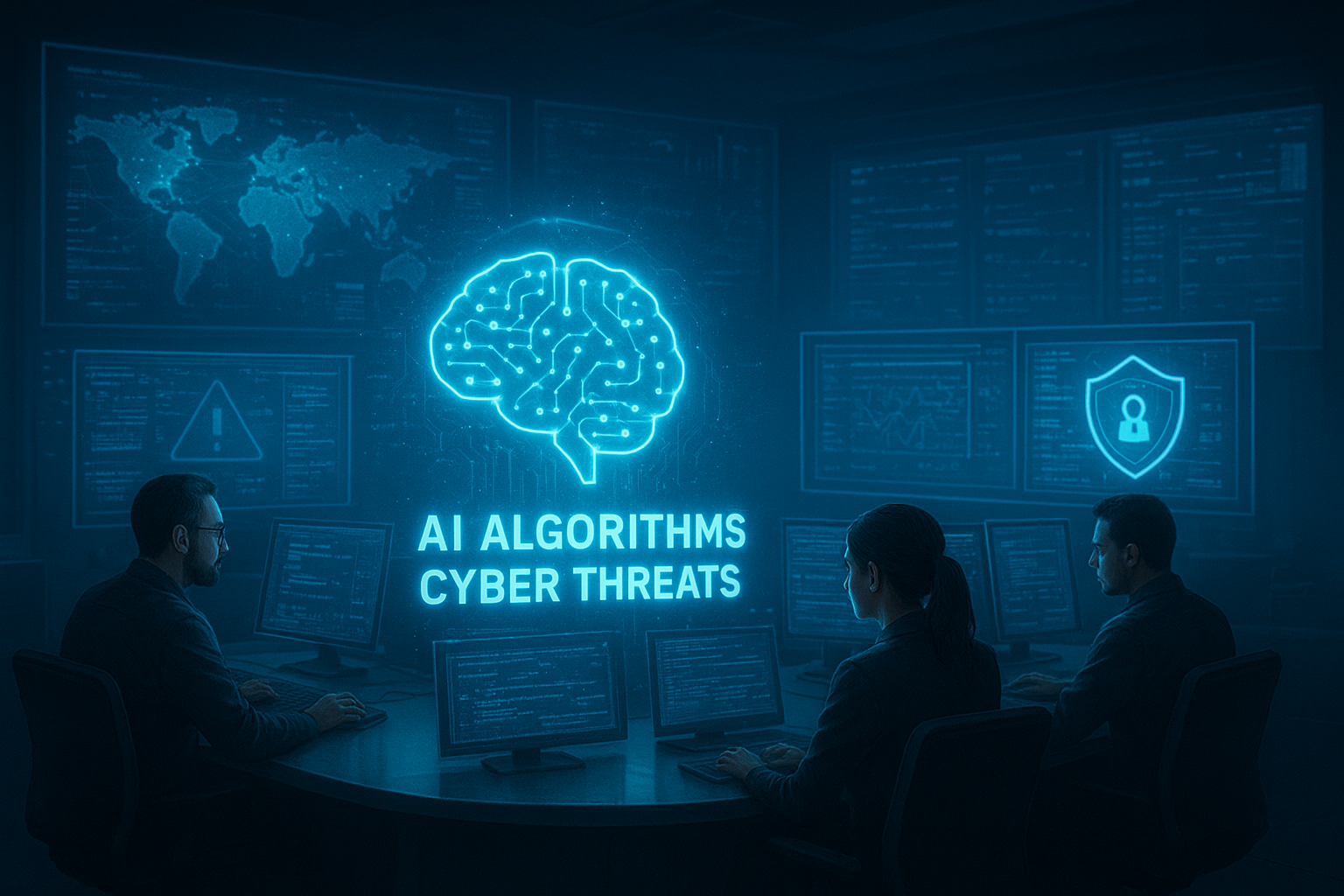 How AI is Transforming Cybersecurity in 2026
How AI is Transforming Cybersecurity in 2026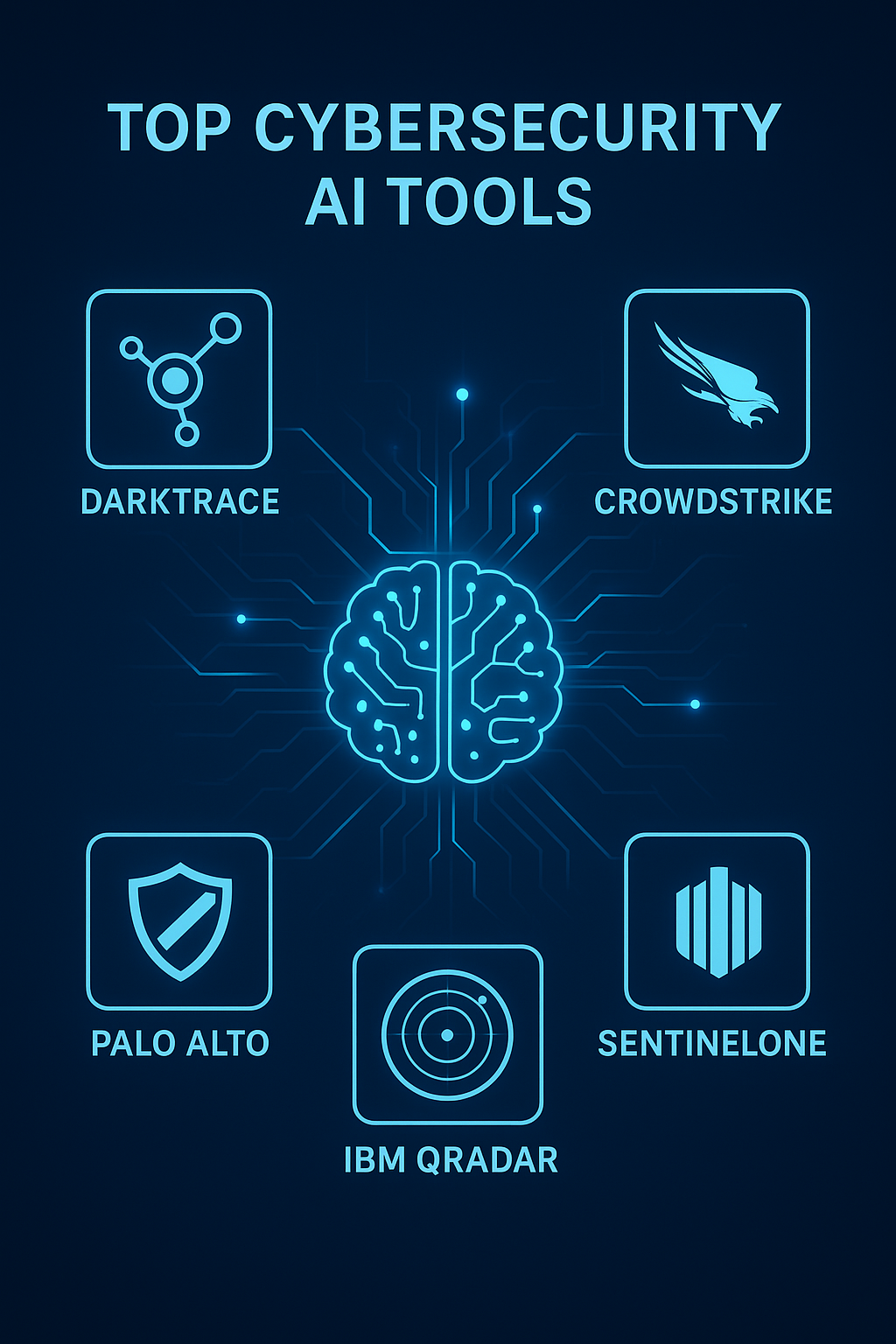 Top AI Cybersecurity Tools 2026 – Revolutionizing Digital Defense
Top AI Cybersecurity Tools 2026 – Revolutionizing Digital Defense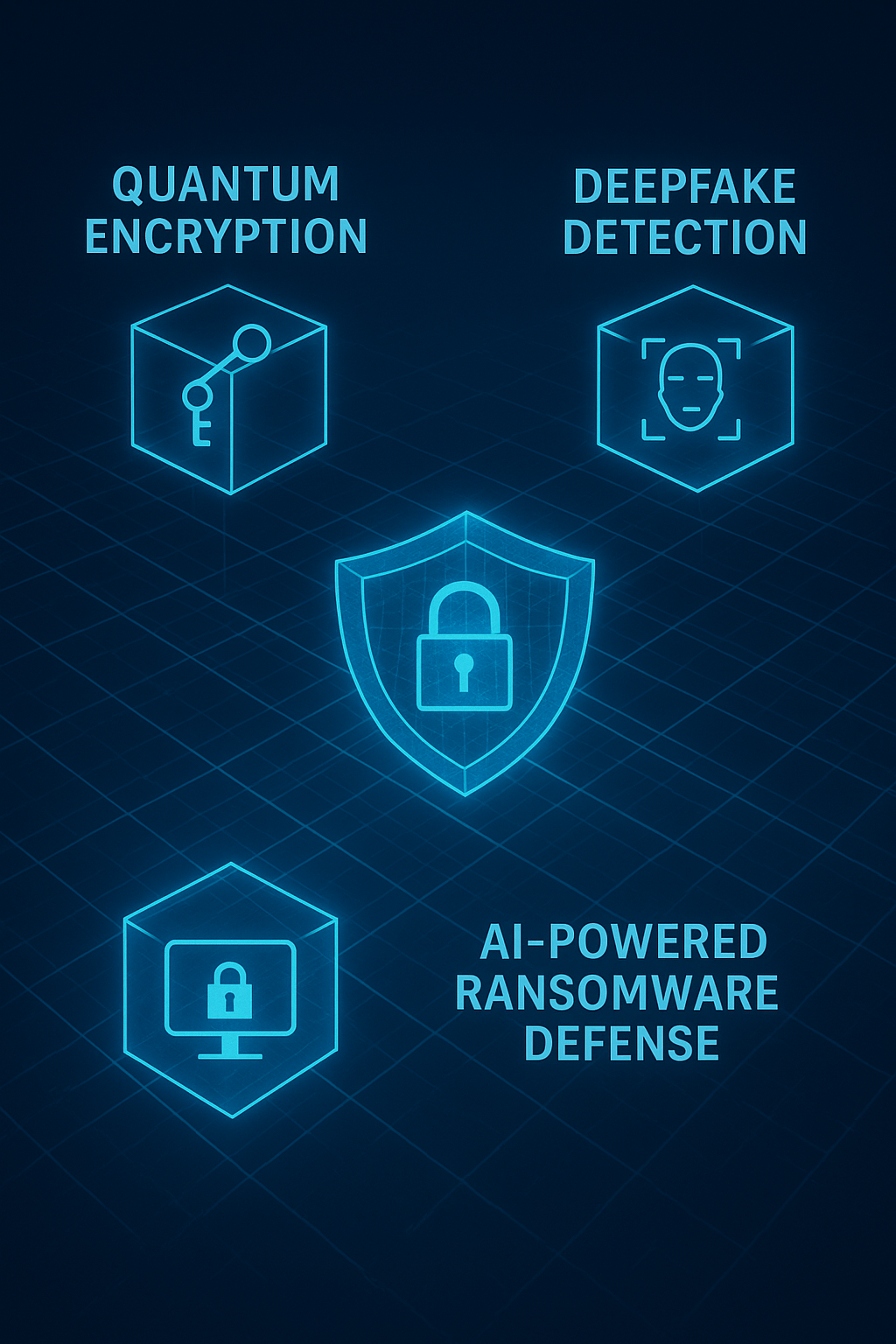 Why AI in Cybersecurity 2026 Is a Career Goldmine
Why AI in Cybersecurity 2026 Is a Career Goldmine